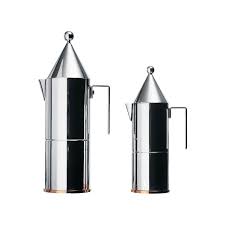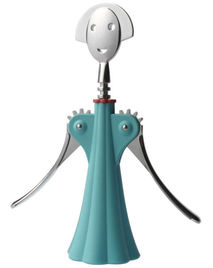 I don’t want to get too personal, but I am tempted to suggest that you own some product or products made by Alessi – products that make you feel vaguely artistic and unique even though they are mass produced and sold to millions of people. If you are familiar with the history of Alessi, you may know that these products are radically different from their original collection of serving tools for the food and hospitality industry, a classical low-margin high-volume good with professional buyers. From the design of the Alessi good you own – and the price – you have probably guessed that it is a high-margin good. And you are not a professional buyer of household goods. How did Alessi make this change in product focus? This is the topic of an article in Administrative Science Quarterly by Elena Dalpiaz, Violina Rindova, and Davide Ravasi. They show that, interestingly, this move into a much more profitable and “cushy” market segment was controversial and complex. Professional serving tools are designed differently, made differently, and marketed differently than the artistic goods that Alessi now focuses on, so this was a change in philosophy and in skills. Their article explains how this was done, and how other firms can learn from the transition, giving a full picture of how a complex change process was done. I will just tell you one element: the role of the amphibious coffee maker. What makes a coffee maker amphibious? It can live in two environments, moving smoothly from kitchen, where it functions well, to living room, where it looks good. Amphibious products, both concept and actual product, were used internally in Alessi to explain the strategic change. They were used externally to guide customers along the path from a set of truly artistic (but less useful) products that were sold in small numbers in the transitional period to the mass-produced and more useful (but still pricy) products that Alessi wanted to sell. This is a very important insight. Amphibious products created a bridge in the customers’ mind between the artistic and the useful. With this bridge in place, the customer was willing to adjust the price range paid for a coffee maker, or an egg stand, or a wine bottle opener. Amphibious products also created a bridge in the organization between its origin as a maker of mass-produced serving tools to its destination as a maker of artistic household goods. Alessi’s products were now amphibious; Alessi was now amphibious. Truly an interesting success story. Dalpiaz, Elena, Violina Rindova, and Davide Ravasi. 2016. Combining Logics to Transform Organizational Agency: Blending Industry and Art at Alessi. Administrative Science Quarterly, 61: 347-392. Comments are closed.
|
Blog's objectiveThis blog is devoted to discussions of how events in the news illustrate organizational research and can be explained by organizational theory. It is only updated when I have time to spare. Archives
May 2024
Categories |

 RSS Feed
RSS Feed